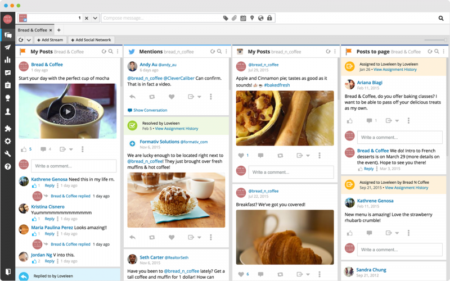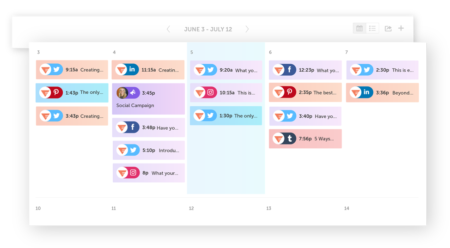If you manage a blog or a brand’s social channels, then you know how important it is to stay organized and consistent with your posts. That’s why we wanted to share how we organize and schedule social content, along with tips on how to create your own editorial calendar.
What is an editorial calendar?
Have you ever sat down to post on behalf of your business or blog and felt stuck? Sometimes it can be difficult to constantly come up with new ways to share your content. Sometimes you feel torn between channels and may wonder which one will drive more awareness, engagement or clicks. That’s where a content calendar comes into play.
A content or editorial calendar is a document that keeps your blog and social channels organized and consistent with – you guessed it – sharing your content. It’s a place where you can have an at-a-glance look at what will be pushed out that month, allowing you to more easily plan ahead and avoid the last-minute rush to create copy or images.

Getting started: creating an editorial calendar
Once you have a template of a calendar to use, that is a great start! But what should be included on your calendar? Every brand is different and will have different priorities. Here are a few thought-starters:
- Plan in Advance: Plan far enough in advance to avoid the last-minute scramble of finding things to post. We recommend at least a month in advance.
- Identify Channels: Determine which social media and/or blog channels you want to organize and schedule.
- Identify Key Moments: Mark key moments throughout the year for your brand/blog, and don’t forget to include holidays or industry events to remind you to share relevant content. Also, include placeholders for real-time or organic content that may coincide with events or company happenings.
- Be Mindful of a Strategic Mix: In addition to a steady stream of timely content, keep evergreen content in the calendar to repost and share again during relevant times of the year.
- Prioritize Visuals: When it comes to social media, imagery and video are your best friends. You don’t need to plug in the exact image you plan on using, but it helps to jot down ideas for what you’re visualizing. This way, when it comes time to post, you can more easily find/create a relevant photo or video to share.
- Make Your Calendar Multi-Purpose: Your calendar can have many uses, such as a place where you can note future content ideas. Did you ever have an idea for something to share, then forgot about it when the time came to post? Make placeholders for any and all ideas that can be completed later.
- Leverage Others’ Content: First and foremost, proper attribution is key when sharing all content. With that said, find relevant articles that fit your audience’s interests and plug those into the calendar to share later.
- Assign Roles: Determine who on your team is posting, who is creating the content, and when is it due. Assign roles with deadlines, as needed.

How do I know when or how often I should post social media?
Wouldn’t it be nice to have a straight set of rules to follow for posting? You can find plenty of articles telling you how frequently and when to post on each platform — right down to the exact time of day. The truth of the matter is that finding the right time to post doesn’t work like that. There are some rules of thumb that hold true (for example, Pinterest is more active on the weekends), but it comes down to understanding your audience more than anything.
There are tools to help you track your social pages and know when your audience is most active. For example, Facebook’s Page Insights is a great way for admins to find the times for their best audience engagement. Twitter Analytics is another built-in feature social media managers should utilize. For Pinterest, start here with some best practices for pinning. With ever-changing algorithms, we recommend you think about consistency and genuine engagement with followers over the particular time of day to post.
For more information on understanding your audience in regards to posting times, check out this article.
What’s the best way to make my calendar?
If you like doing things the old-school manual way, making a spreadsheet will definitely work. Each channel has a section where you put the content you intend to send and when. However, this method can get very cumbersome very quickly. That’s why a scheduling tool like Buffer, Hootsuite, or CoSchedule can save you time and effort. These programs are designed to have all your social channels on one, manageable page. They also automatically post based on your schedule, so you won’t have to keep track of remembering. If you’re a heavy Pinterest user, something like Tailwind might be better for you. TweetReach is a great program for scheduling your tweets and getting snapshot reports. Your editorial calendar is there to make your life easier, so choose a method that makes sense to you.



Take a Comment. Leave a Comment.
Read More ...
Influencer Marketing Resources: April 2025
Influencer Marketing Resources: March 2025
Social Media Metrics Glossary: Your Guide to Effectively Measure Your Next Influencer Campaign